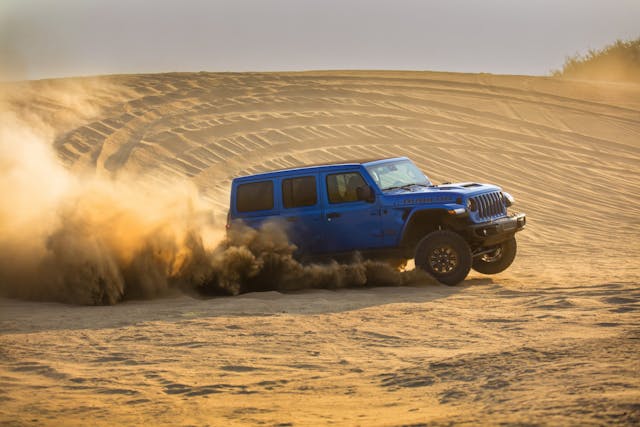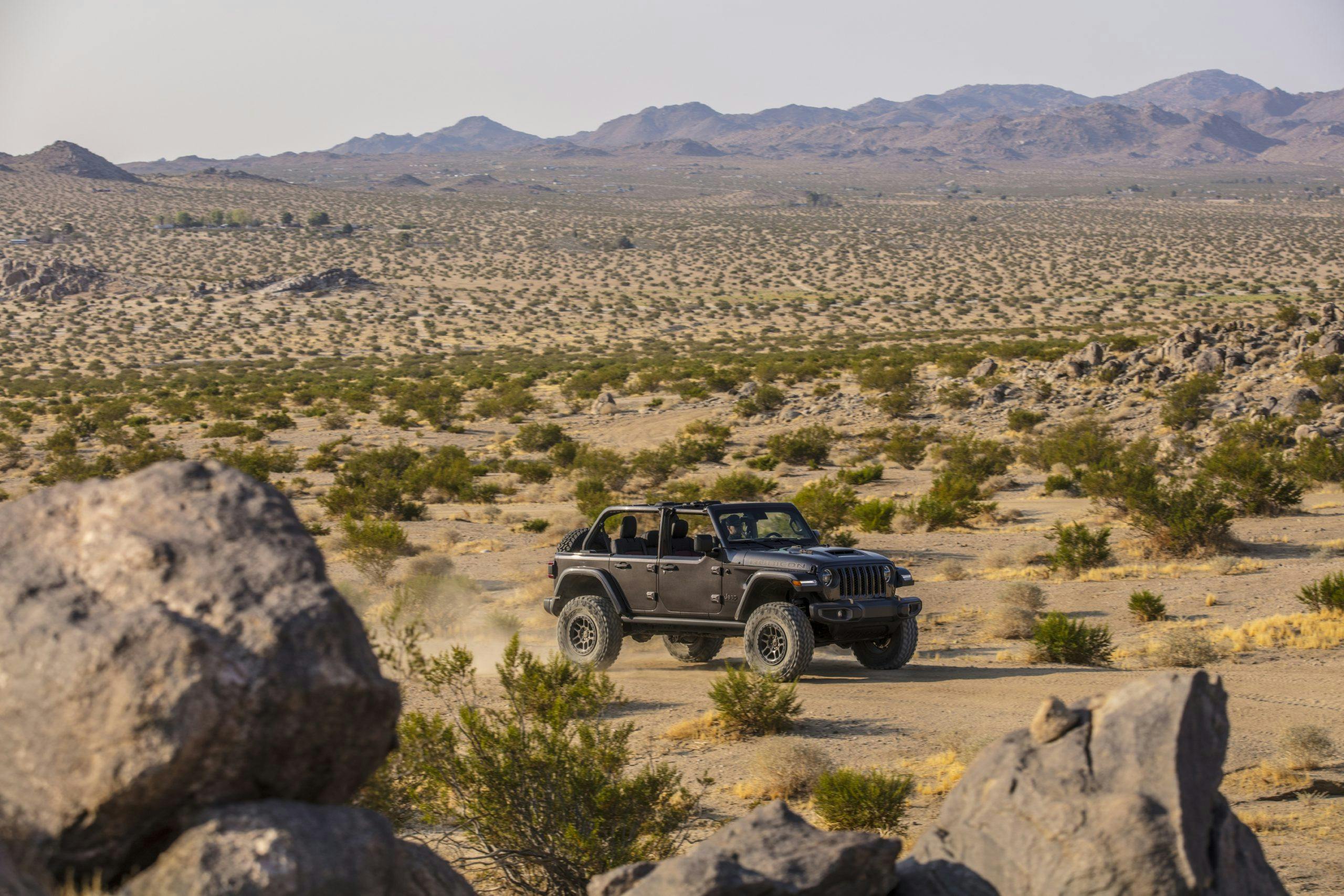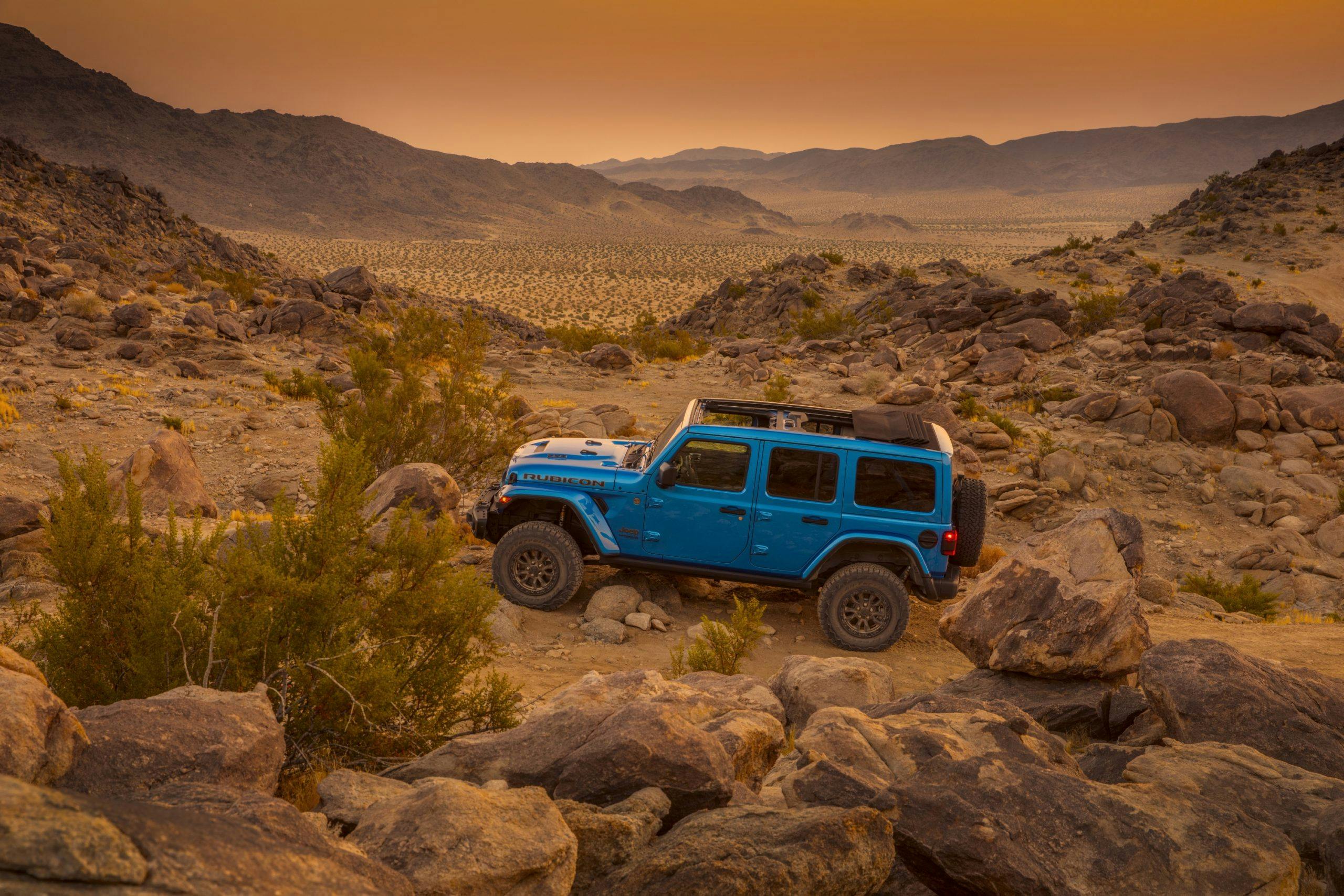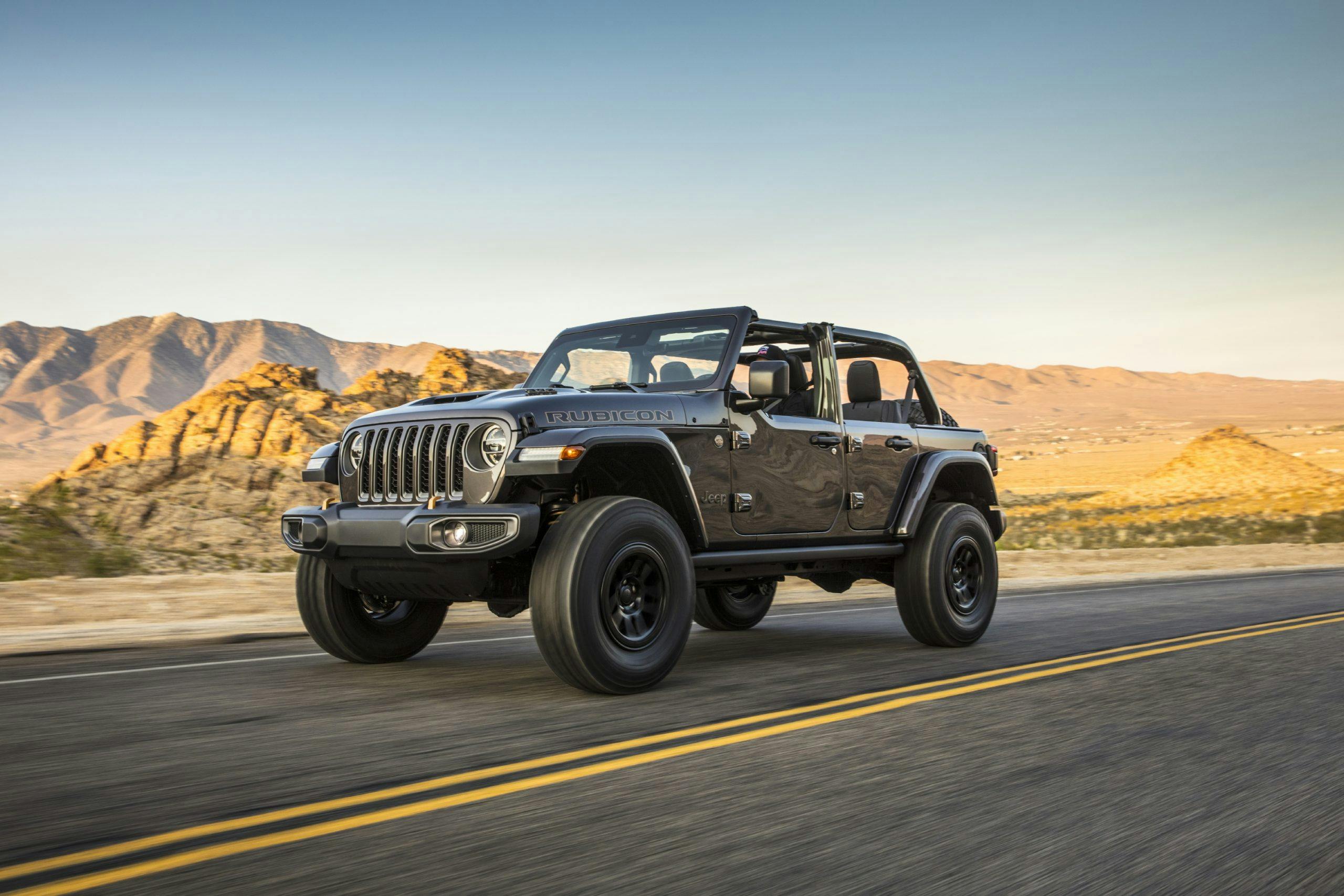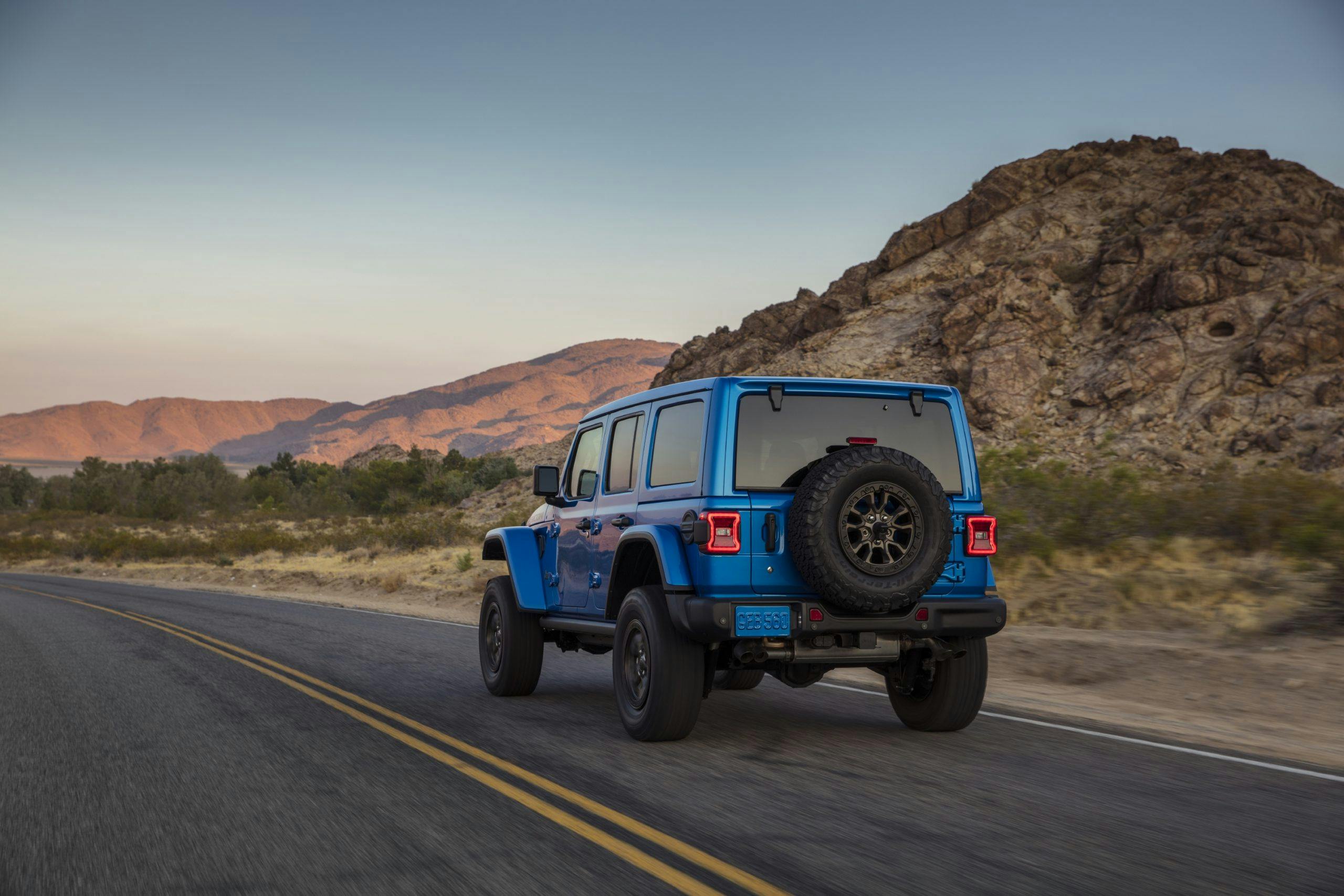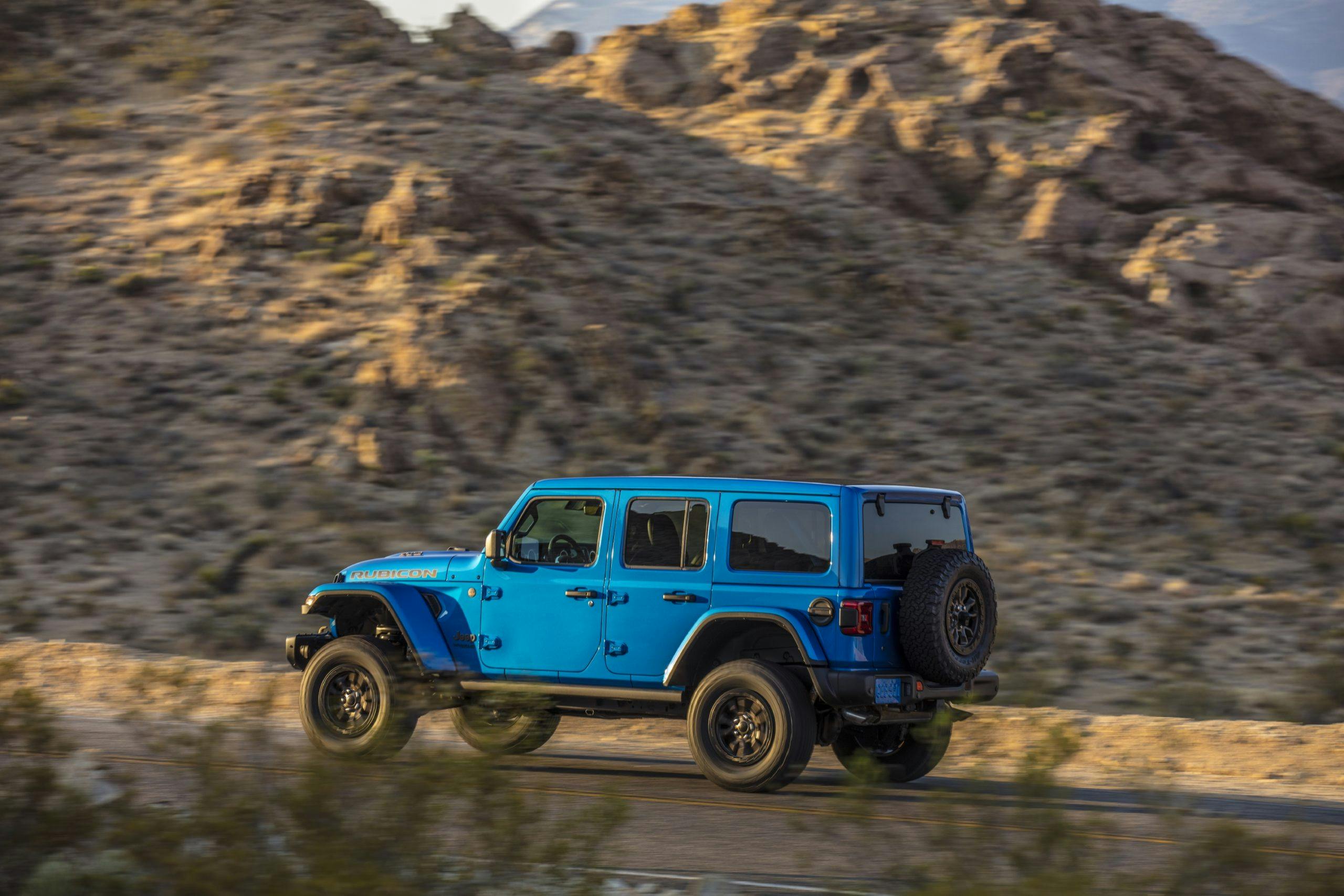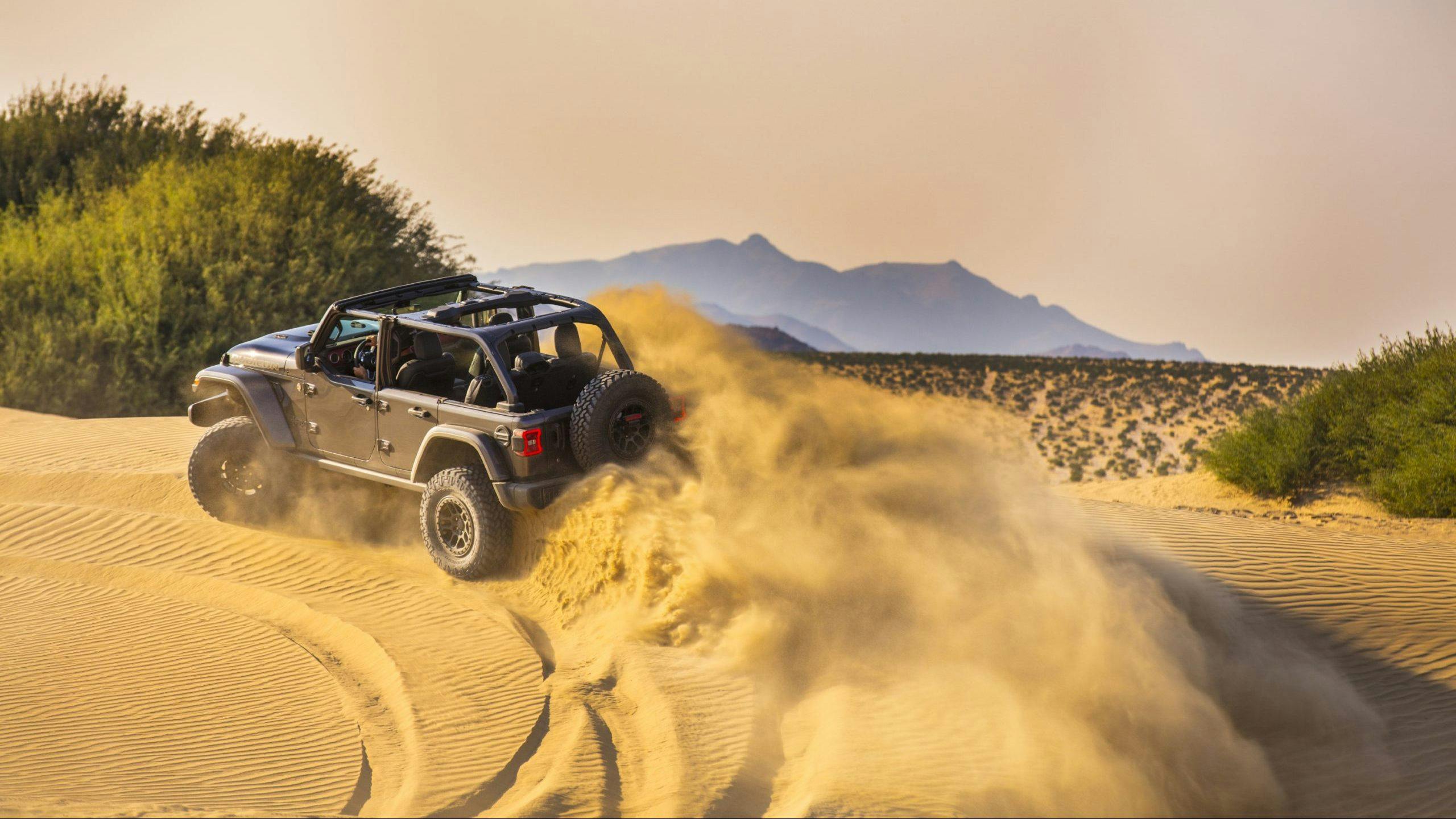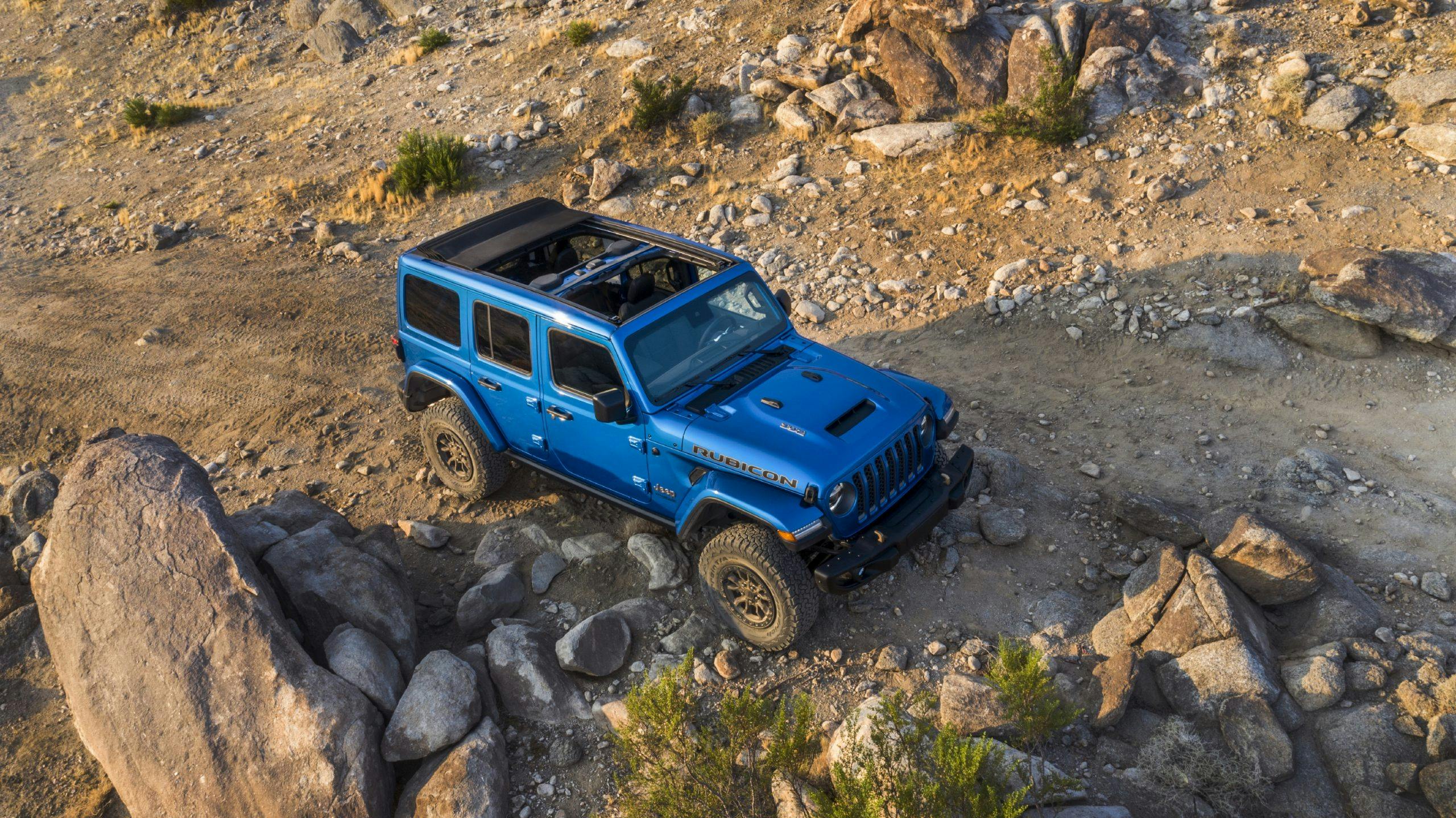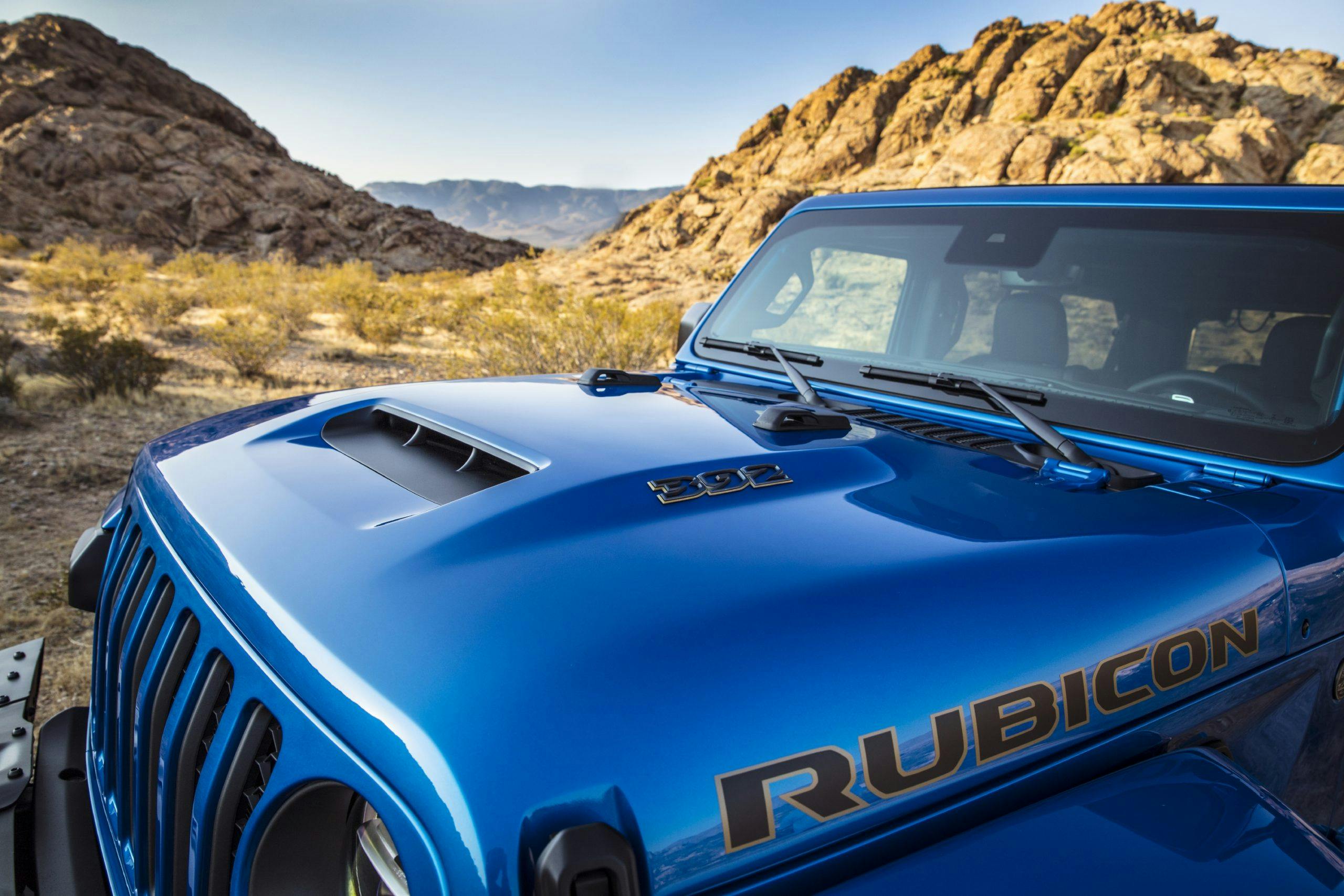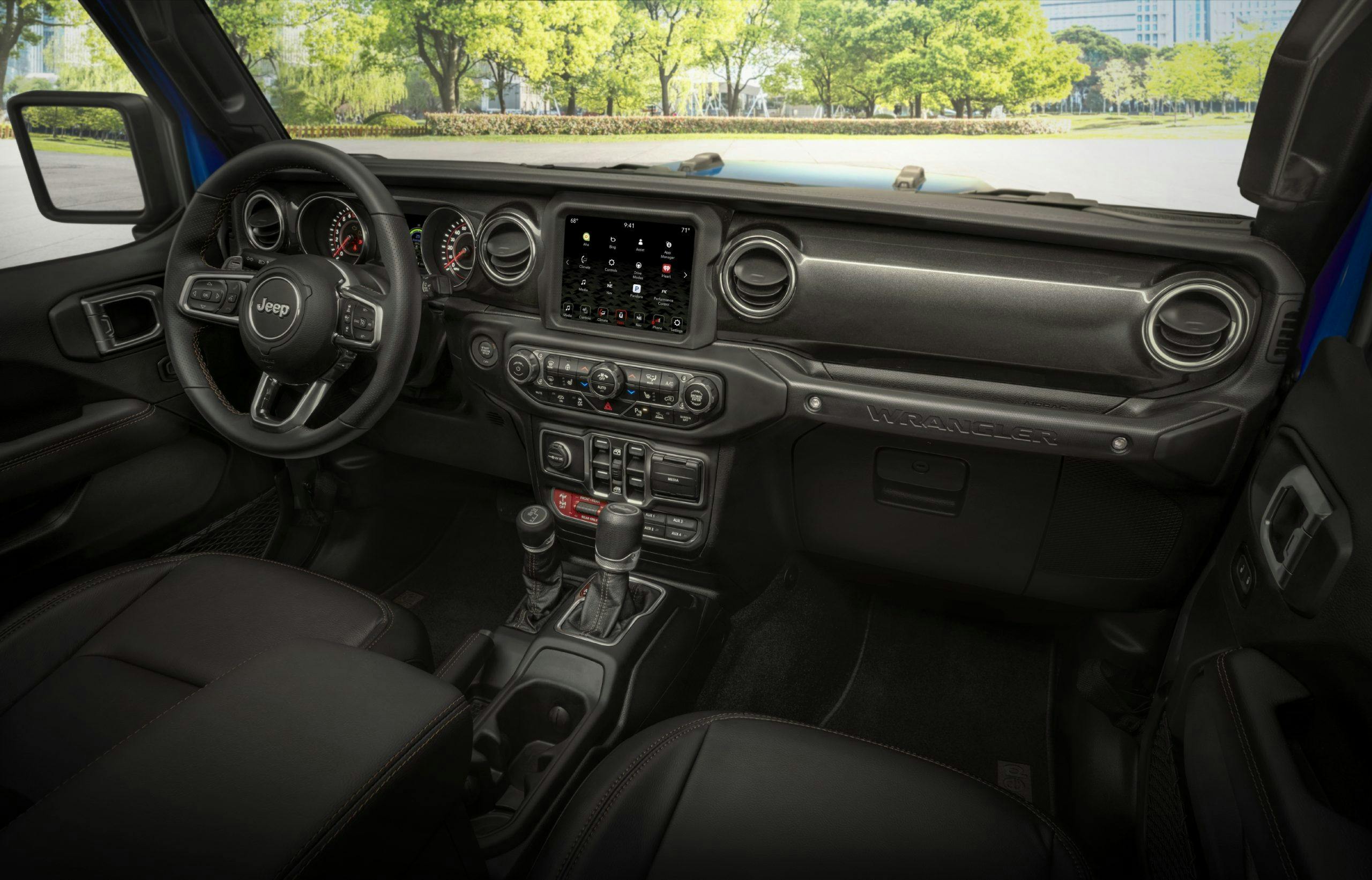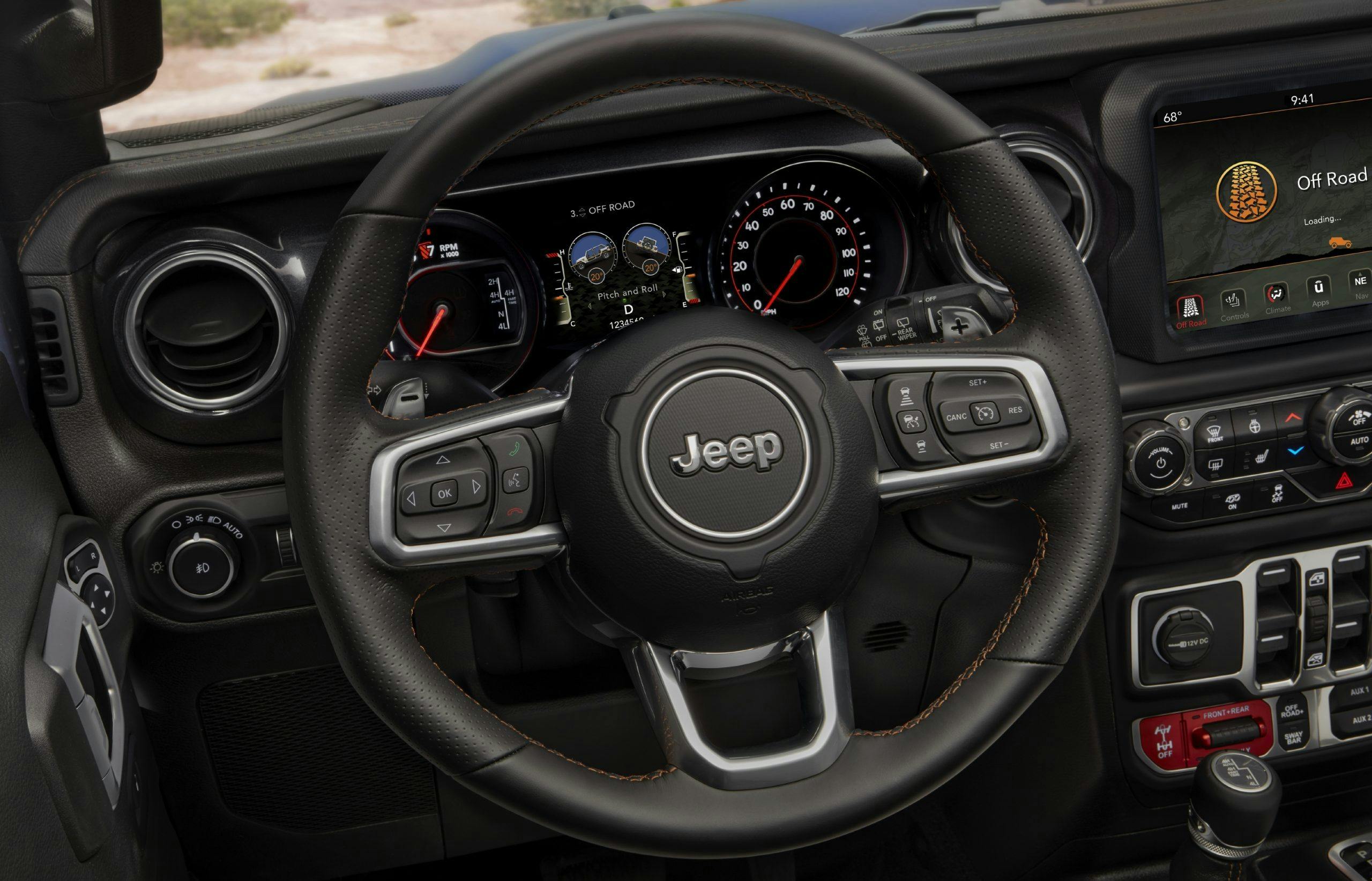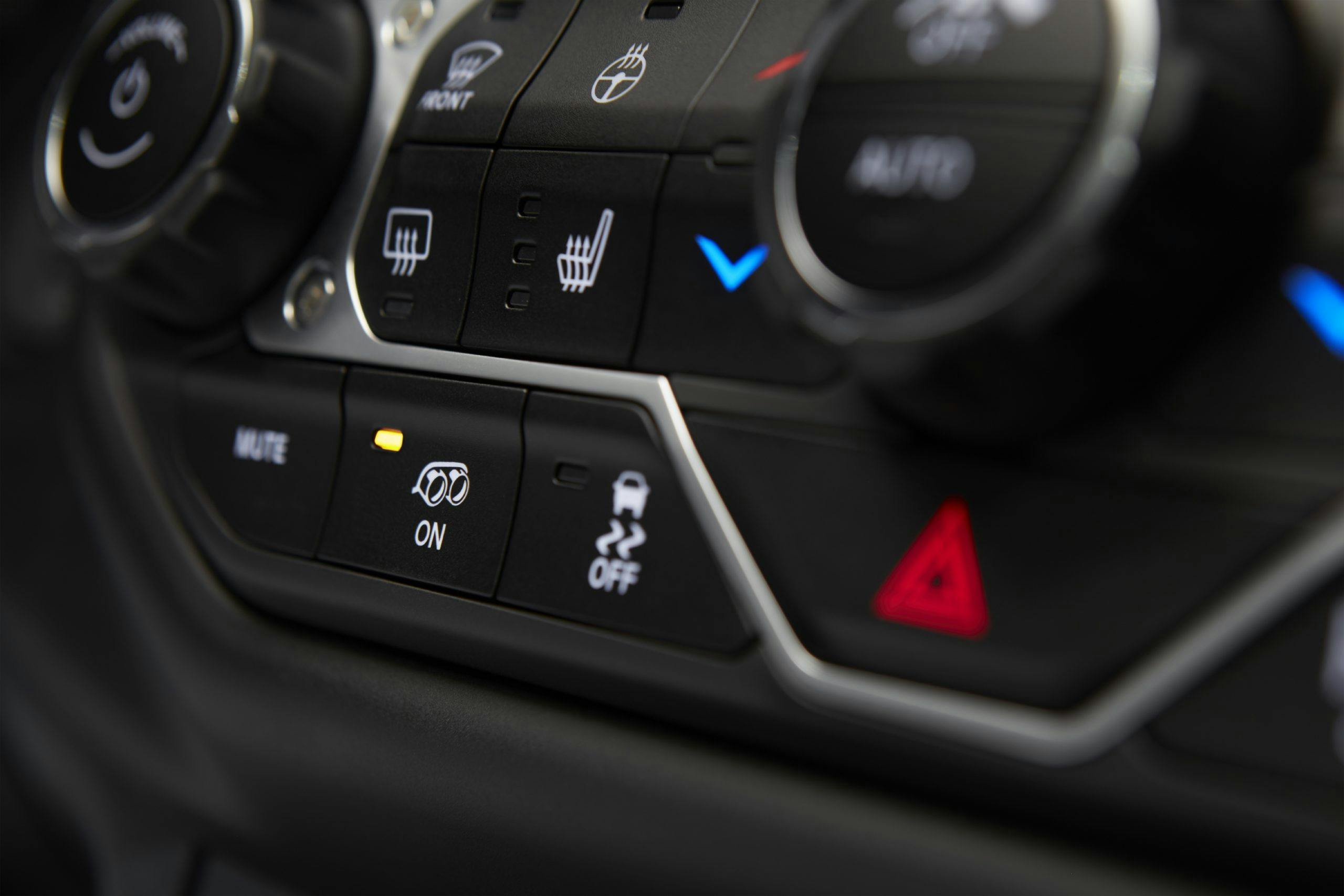470-hp Jeep Wrangler Rubicon 392 is officially for real
When we had a chance to drive the burly Wrangler 392, Jeep told us that it was waiting to see the customer response to the concept before green-lighting such an endeavor for production. Whether or not this was merely a coy rejoinder to our hopeful question, customer feedback must have been pretty definitive—the real deal Wrangler Rubicon 392 will hit dealerships this spring.
The star of the show is—you guessed it—the 392 Hemi V-8 lurking under the Wrangler’s hood. The 6.4-liter brute has an iron block, aluminum heads, an active intake manifold, variable cam timing, twin spark plugs, and sodium-filled exhaust valves. Power figures are as colossal as you’d expect—470 horsepower and 470 lb-ft of torque, with 75 percent of the torque available just above idle speed. In this application, the engine also boasts a rear sump oil pan, high-mount alternator, and cylinder deactivation.

Iconic though it may be, the Wrangler’s seven-slat grille isn’t exactly a wind tunnel. Air flow is a real concern, as evidenced by the EcoDiesel‘s torquey character but timid tow rating. To help fill the Wrangler 392’s massive lungs, Jeep engineers got creative. First, they grabbed the scooped hood from the Gladiator Mojave. Then, they developed a trick ducting system called Hydro-Guide to separate air and water—up to 15 gallons per minute—before it reaches the engine. That system is part of what enables the Wrangler 392 to wade through water up to 32.5 inches deep.

The engine is paired with the familiar TorqueFlite 8HP75 eight-speed automatic. Sorry manual fans, there’s no stick-shift option available. If you insist on managing your own ratios, there are aluminum paddle shifters behind the steering wheel.
There’s a nifty feature called Torque Reserve, which fusses with fuel and spark to help maximize brake torque launches, and another one called “AMax” which doesn’t cut throttle quite as much on flat-foot upshifts, again helping to squeeze every bit of forward shove out of the torquey engine. The systems help catapult the Wrangler 392 to 60 mph from a standstill in just 4.5 seconds (45 percent faster than Pentastar-powered Wranglers) on the way to a 13-second quarter mile time. The Wrangler 392 has a top speed of 99 mph, but that’s owing to the limitations of the standard 33-inch BF Goodrich KO2 tires.
Acceleration times are only impressive on a vehicle like the Wrangler so long as the off-road capability isn’t compromised. From the looks of things, Jeep did not skimp that front.
Thanks to its standard transfer case, the engine in the 392 turns all four wheels at all times. The two-speed active transfer case uses a 2.72 low-range gear ratio, programmable to one of four drive modes at all times: 4WD auto, 4WD high, neutral, and 4WD low.
The standard Rubicon’s optional 4:1 low ratio is not offered on the 392, in part because the Hemi’s prodigious torque actually delivers more twist to the wheels with the 2.72:1 case than the 3.6-liter can deliver with the 4:1 gears. There’s also a special torque converter lockup feature on the Wrangler 392 that gives the driver more finesse with a direct connection to the tires, allowing that 48:1 crawl ratio to be utilized with more precision and control.
Other off-road essentials from the normal Rubicon remain, including heavy-duty Dana 44 axles (with 10-mm-thick axle tubes), electronic locking diffs, and an electronic front sway-bar disconnect. Wrangler 392s get a two-inch suspension lift with Fox shocks, as well as 33-inch tires on 17-inch wheels—beadlock-capable wheels are optional from the Mopar aftermarket catalogue. The lift and tires deliver 10.3 inches of ground clearance and help bolster the already-impressive and always-important off-road angles. Approach, breakover, and departure angles are now 44.5, 22.6, and 37.5 degrees, respectively. The Wrangler 392 gains a half-degree on approach and departure over four-door Rubicons with other engines. Ground clearance actually dips slightly, down from 10.8 inches in the standard Wrangler Rubicon to 10.3 inches here—Jeep says that it’s because of the skid plate protecting the new exhaust. No matter. Forge ahead and flatten obstacles on your way up the mountain trail; this is still a ludicrously capable vehicle.
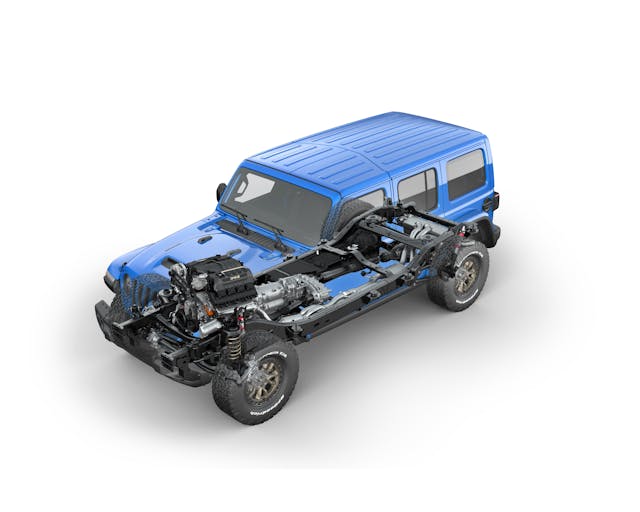
The Wrangler Rubicon required other necessary upgrades needed to balance out the boisterous 392 engine. Engineers upgraded the frame rails and upper control arms for this application. They also cribbed the cast iron steering knuckles from the Gladiator Mojave in place of the aluminum ones on non-392 Wranglers. Meanwhile, a set of heavy-duty brakes is responsible for bringing the Hemi-equipped Wrangler’s extra paunch to a steady halt.

Onlookers will know you “got the big one” by the amount of bronze festooned over the exterior of the vehicle. Everything from the wheels, the tow hooks, the outlines on the “Rubicon” hood decal, even the Trail Rated and Jeep badges dons the brushed metallic hue. It’s not obscenely overt, but once you start seeing bronze it will pop up everywhere you look, and the effect is quite handsome, really. Dual exhaust pipes with twin-tips out back are another dead giveaway that mean-looking Jeep is a 392; if it’s running, of course, the loping idle from 6.4-liters of American muscle does the trick.
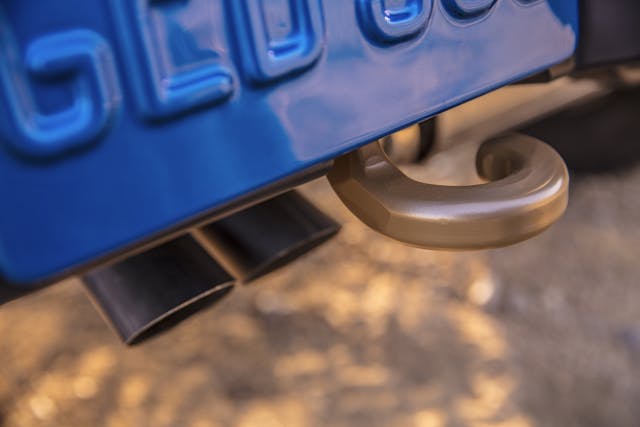
Buyers can choose from one of nine exterior colors: Black, Bright White, Firecracker Red, Granite Crystal Metallic, Punk ‘n Metallic, Sarge Green Metallic, Snazzberry Metallic, Sting-Gray Metallic, and Billet Silver Metallic. Opt for the Sarge Green or Snazzberry for maximum Instagram kudos. As of this writing, the gorgeous Hydro Blue pictured here is not an option—Jeep confirmed that the color will arrive later on in the production run.
Every Wrangler gets a black interior with front seats that offer additional bolstering. Most of the luxury options on other Wranglers come standard here, including a leather interior, heavy-duty electrical switch bank, body-color hardtop (although all three top options will be offered), steel bumpers, cold weather group, keyless entry, and LED lights, among others.
More great news (aside from the first factory V-8 Wrangler in nearly 40 years) comes in the form of doors. We figured that between the mule we saw out and about in October and the Wrangler 392 concept that we drove in September, the half-door’s return was imminent. We were right; Jeep says that as of this month, buyers can purchase half-doors for all of its new Wranglers. What’s more, future Wrangler buyers can opt for a double-door package, which nets both the full- and the half-doors.

Although Jeep hasn’t yet announced how much all of this Hemi-powered fun will cost, we’d recommend you start saving up now. Trigger-happy buyers can clear $60K on a four-door Wrangler Rubicon without much difficulty, and that’s without a Hemi; we don’t think $70,000 is an out-of-left-field estimate. At that point, a certain equine-inspired product from Dearborn could start looking tasty, V-8 goodness notwithstanding.
Still, for many, the words “Hemi-powered Jeep” require no further convincing. Those buyers won’t have long to wait. The first Wrangler Rubicon 392s will hit dealerships in spring of next year. Jeep says that production will be limited, although specific figures were not provided.
Did we expect that Jeep would eventually shoehorn a Hemi into the Wrangler’s engine bay? You bet. Are we any less excited to experience one in person? Not by a long shot.
